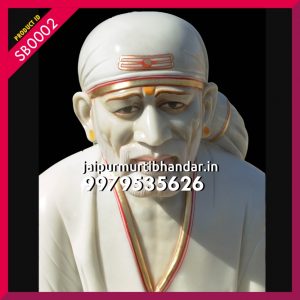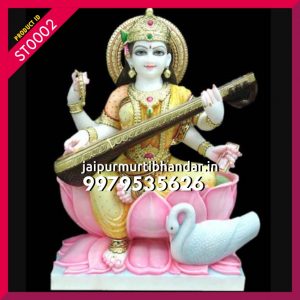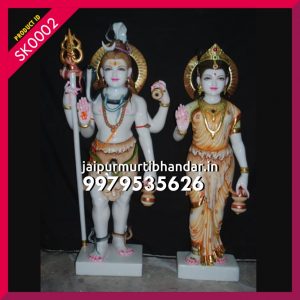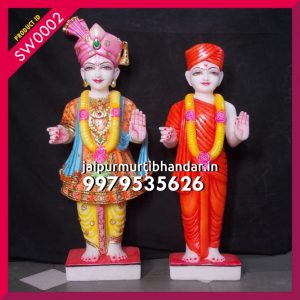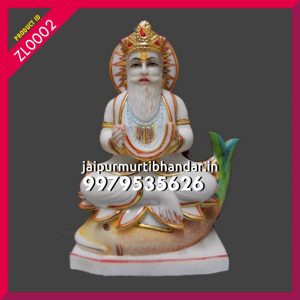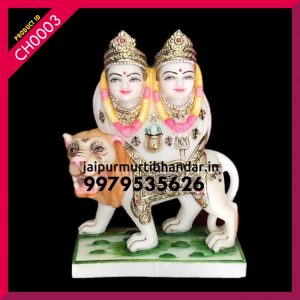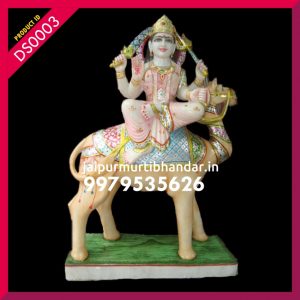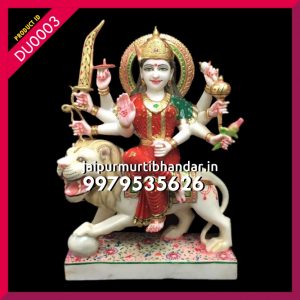-
Sai Baba : SB-0002
Sai Baba was a born to a Brahmin couple of Patri which was in the Nizam state of British India. Where his parents handed over him to the fakir. These were the words revealed by baba in his last days. But Date of birth is still unknown to the world. There are lots of communities who claims that Baba belong to their respective communities but none of them proven.
-
Saraswati Maa : ST-0001
Saraswati’s name means ‘elegant’, ‘flowing’, and ‘watery’ and this is indicative of her status as one of the early Aryan boundary rivers. The Saraswati River (modern name: Sarsuti), just like the Ganges River, flows from the Himalaya and is considered a sacred source of purification, fertility, and good fortune for those who bathe in her waters. The sacred river, again like the Ganges, then developed into a personified deity.
-
Shankar : SK-0002
In the Hindu mythology, Lord Shiva is the Destroyer and the most important one in the Holy Trinity, the other two being Brahma the Creator and Vishnu the Protector. Lord Shiva has always fascinated his followers by his unique appearance: he has not two but three eyes, has ash smeared all over his body, has snakes coiled up around his head and arms, wears tiger and elephant skin, leads a wild life in the cremation grounds far removed from social pretenses, and is known for his proverbial anger..
-
Shivling: SV-0002
We are engaged in exporting the Marble Shivling God. Considering the spiritual value attached to it, we offer our client various kind of Marble Shivling. The ultimate finishing work, perfect cutting and dimensional accuracy offer superb quality statue. Our quality controllers check the product before the final dispatch in the market.
-
Shrinath Ji : SH-0002
Shrinathji?s idol was brought to Rajasthan from Govardhana near Vrindavan to protect it from the hands of the Mughal emperor Aurangzeb who in 1665 was bent upon vandalizing the area of Vrindavan by widespread destruction of Hindu temples. When the Mughal army came to Govardhana, the devotees of the Lord showed them the titles and gifts given to the temple by the previous Mughal rulers. The army commander then ordered the deity to be taken away from Govardhana. For almost six months the statue stayed in Agra after which the custodians of the idol of Shrinathji left that place with the idol in search of a new heaven.
-
Swaminarayan : SW-0002
The Swaminarayan Sampraday began as the Uddhav Sampraday and was led by Ramanand Swami. In 1799, Swaminarayan, born as Ghanshyam Pande, was initiated into the Uddhav Sampraday as an ascetic (Sadhu) by his guru, Ramanand Swami, and given the name “Sahajanand Swami”. At the age of 21, Neelkanth Varni was given the leadership of the sect known as Uddhav Sampraday with the blessings of Ramanand Swami, who handed him control of the religious diocese shortly before his death. Fourteen days after Ramanand Swami died, Neelkanth Varni, now known as Sahajanand Swami, held a large gathering of followers at the town of Faneni. It was during this meeting that Swaminarayan introduced what he termed “the father of all Mantras” and described it as “maha” (or great).[8] Then he was known as Swaminarayan, and the name “Swaminarayan Sampraday” came into existence.
At the age of 49, Swaminarayan took Samadhi at Gadhada in 1830 and died, after he promised to remain within the Swaminarayan Sampraday in the images he installed (and by the Acharyas succeeding him), the Acharyas and saints installed by him (and those in direct succession), the saints he initiated (and those initiated by succeeding Acharyas) and the scriptures, such as Shikshapatri, Vachanamrut, Satsangi Jeevan, Nishkhulanand Kavya and Yamdand (and those authorised by succeeding Acharyas).
-
Vishvakarma : VK-0002
Vishwakarma (Sanskrit for “all-accomplishing, maker of all, all-doer”) is personification of creation and the abstract form of the creator God according to the Rigveda. He is the presiding deity of all Vishwakarma (caste), engineers, artisans and architects.He is believed to be the “Principal Architect of the Universe “, and the root concept of the later Upanishadic figures of Brahman and Purusha.
He is mentioned as the son of K??yapa and Aditi and is said to have made the three worlds with pieces of the Sun god, Surya.
-
Zhulelal : ZL-0002
For Sindhi Hindus, Jhulelal is a name that refers to the Ishta Dev (most-revered deity) of Sindhi Hindus, who regard him to be an incarnation of the Hindu deity Varuna.The chant Jhule Lal Jhule Lal is considered the “clarion call” of Sindhi Hindus.
Jhulelal is traditionally believed to have performed several miracles, typically centred around the Indus River – which Hindus consider to be his abode.Sindhi Hindus worship Jhulelal at the Shrine at Odero Lal in Pakistan’s Sindh province, which is jointly used by Hindus, and Sindhi Muslims who revere the shrine as the tomb of Sheikh Tahir.
-
Brahmani Maa: BRM-0003
The Brahmani Mata also known as Brahmi and Brahmayi is a kind and benevolent aspect of Devi, the Divine mother. The Brahmani is associated with the Hindu creator god, Brahma as his Shakti power. She is one of the seven Mother Goddesses called Matrikas. She is an aspect of Mata Saraswati, a form of Adi Shakti, possessing the Rajasi Guna and hence is the source of Brahma's power. Without her, Brahma remains dormant or unable to create.
She is depicted yellow in color and with four heads. Like Brahma, she holds a rosary or noose and kamandalu or lotus stalk or a book or bell and is seated on a hansa as her vahana.
-
Chotila Maa: CH-0003
Chamunda Mata is when the two demons named 'Chanda' and 'Munda' good for the road for many years thanks to the Lord Brahma. Brahma was pleased when he appeared before them and asked the demons warriors strong and dominate the world and into the sky. Brahma was merciful wish.There granted to the chaos of the world and demons became very greedy and tried to revive the sky and the three houses of Vishnu (Vaikuntha), Shiva (Kailas) and Brahma (Brahmaloka). Three gods went to the mother goddess Parvati who took the form of Chandi and Chamunda who murdered Chand mund.
-
Dasha Maa: DS-0003
Goddess Durga a super powerful deity ? Shakti? in Hindu mythology is worship in various forms corresponding to her to aspects benevolence and fierceness. She is Uma, “glow”; Gauri, “white or brilliant”; Parvati, “the mountaineer”; and Jagatmata, “the-mother-of-the-world” in her milder guise The terrible appearance are Durga “the inaccessible”; Kali, “the black”; Chandi, “the fierce”; and Bhairavi, “the terrible.”
Durga, a gorgeous warrior riding upon a tiger or Lion. Devi Durga with a lion in a fearless pose is known of “Abhay Mudra”, signifying assurance of freedom from fear. The universal mother seems to be saying to all her devotees: “Surrender all actions and duties onto me and I shall lift you from your all troubles “.
-
Durga Maa: DU-0003
Goddess Durga a super powerful deity ? Shakti? in Hindu mythology is worship in various forms corresponding to her to aspects benevolence and fierceness. She is Uma, “glow”; Gauri, “white or brilliant”; Parvati, “the mountaineer”; and Jagatmata, “the-mother-of-the-world” in her milder guise The terrible appearance are Durga “the inaccessible”; Kali, “the black”; Chandi, “the fierce”; and Bhairavi, “the terrible.”
Durga, a gorgeous warrior riding upon a tiger or Lion. Devi Durga with a lion in a fearless pose is known of “Abhay Mudra”, signifying assurance of freedom from fear. The universal mother seems to be saying to all her devotees: “Surrender all actions and duties onto me and I shall lift you from your all troubles “.

 +91 9979 535 626
+91 9979 535 626